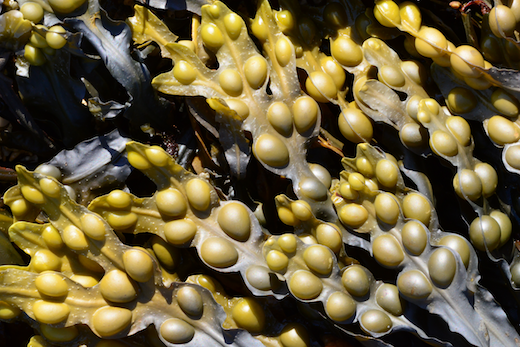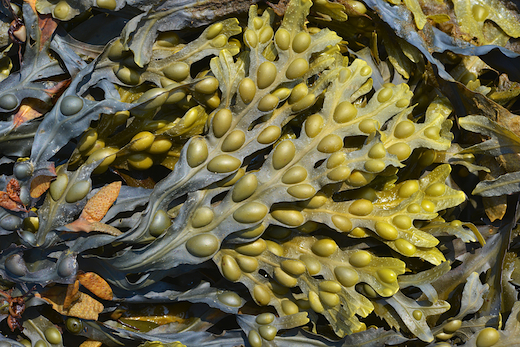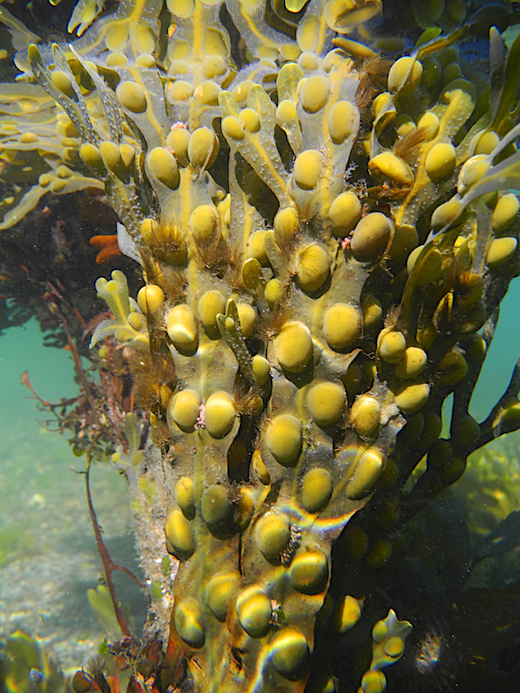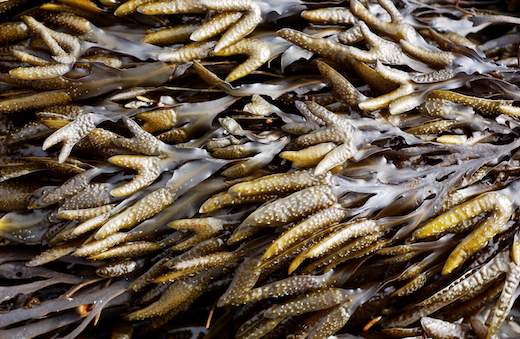Fucus vesiculosus Linnaeus

Description: Mid-shore wrack easily recognised by its paired bladders occurring on either side of a prominent midrib. The frond is generally not strongly spiralled and the receptacles do not have a sterile rim (Fucus spiralis and F. guiryi), and the frond does not have a serrated margin (Fucus serratus). Fucus vesiculosus is attached by a small, strongly attached disc which gives rise to a short stipe. The reproductive receptacles are swollen area at the tips of fronds that have many flask-shaped cavities called conceptacles. These house the male and female reproductive structures known as antheridia (borne on antheridiophores) and oogonia (containing 8 eggs), respectively. The eggs and sperm are liberated onto the surface of the receptacles and a pheromone (sex-attracting substance) is released by the eggs that attracts the sperm. Fertilization results in a zygote that forms a new Fucus adult.
Distribution: This species is common in the North Atlantic south to the Canary Islands. A bladderless form occurs on more wave-exposed shores in the NE Atlantic (last picture below).
Usage: Fucus vesiculosus is used in cosmetic preparations and in thalassotherapy.








